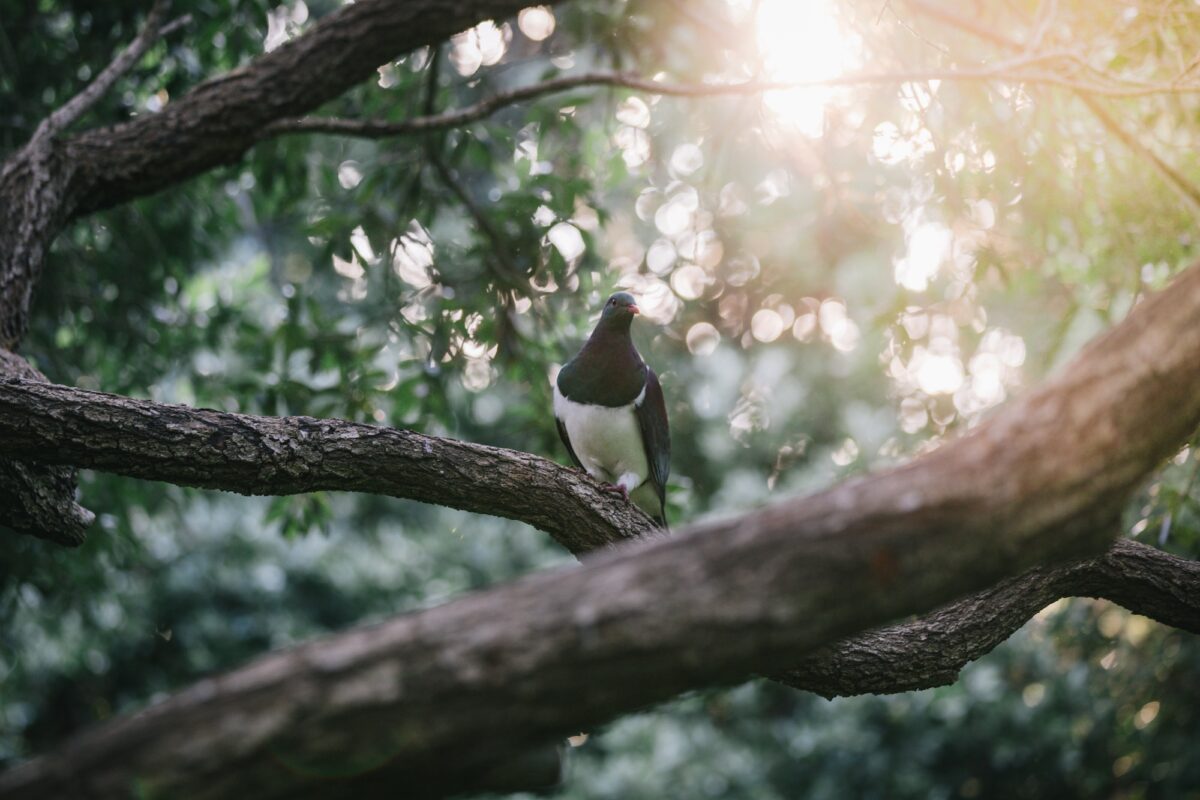For years and years, I’ve harped on and on here about birds in New Zealand. I love them.
Because New Zealand evolved without mammals, many evolved to fill that ecological space, with some losing their ability to fly. It also means that they all seem to have epic and memorable personalities. There’s the cheeky kea, a highly intelligent mountain parrot. Or how about Sirocco, the famous kākāpō, who went viral for trying to mate with Mark Carwardine’s head in a documentary with Stephen Fry? Our national icon, the kiwi, gives birth to an egg so large it’s the equivalent of a human birthing a three-year-old.
Many of these guys hover on the brink of extinction, incredibly rare and endangered because of habitat loss and introduced predators. They’re flashy and showy and often get most of the attention. But then they are so many others who deserve the spotlight, which I am working more on highlighting here.



But I wanted to start with a bird that you often have a chance to see while in New Zealand. Somewhat rare, the kererū is our native wood pigeon. A large bird with iridescent green feathers, a white body, red eyes and feet, with some bronze and purple thrown in, kererū are a well-known and beloved bird here.
These guys can get really fat, combined with their tiny heads and beautiful coloring making them pretty cute, much cuter than your standard city pigeons or, from where I grew up, rats of the skies. In fact, they’re so heavy you often hear them easily in the forest. Known for being somewhat clumsy and mating for life, their wings beat very noisily when they take off, making a distinctive whoosh-whoosh sound. I often hear them before I see them. Kererū are very meme-able
But what it’s most famous for? Kererū are known to get drunk on fermented berries and fall out of trees. Ah, a bird after my own heart. Bird of the Year champions in 2018, kiwis really identified with these guys, voting them right to the top.
And you bet your ass that one day I’ll open a bar called The Drunken Kererū – patent-pending.



Kererū occupy a unique space in New Zealand ecology. They’re not so rare that you’ll never see them. But you won’t see them enough to think they’re common – unless you live in an extra special place. For example, I’ve never seen one in Wanaka, but I have seen them on the fringes of nearby Mt. Aspiring National Park and in most ecosanctuaries.
I’m no expert, but if I had to guess, that’s because of the massive development here with virtually no native bush around the town and the fact that there are too many cats here.
I remember seeing one hang around my old house in Rapaki outside Lyttelton for a few days. It was an unforgettable experience. Generally, kererū hang around places with decent predator control. Their big white bellies and chunky shape are hard to miss, especially when they perch themselves on thin, tiny branches that don’t look like they should support their weight.
Will they or will they not fall out of a tree? Or end up swinging upside down from a branch? Anything is possible.



In my opinion, if I see a kererū in a city or town itself, something is going right there. There have been record numbers of kererū spreading around our capital, Wellington, probably in large thanks to the massive predator-free Zealandia ecosanctuary nearby.
One place I noticed kererū a lot was when I spent up in Gisborne with Zeden Cider. They were in many parks, and I felt like I saw them constantly. Zeden Cider gives 10% of its profits to Forest & Bird, the kaitiaki/guardians of these wild creatures, including kererū. In fact, kererū feature in some of their designs which I love. The more brands get behind conservation, and the more awareness they can spread, the better!
I spent a few days with the local Forest and Bird chapter in Gisborne, checking out the different projects they were working on and seeing some of their success stories on the ground.




Kererū were once a main source of food for Māori. Often preserved in their own fat, they were harvested in snares in autumn when they were getting super fat. The feathers were used for adorning things and making cloaks. Since Europeans arrived in New Zealand, there has been conflict over the kererū. They wanted to hunt them for sport with guns, banning traditional trapping.
Eventually, with the decline of the kererū, hunting them in any way. But for the past thirty years, there’s been significant debates over whether or not to reestablish the customary harvest of kererū by Māori. As of now, it’s still banned because their population is not considered to be strong enough to cope with annual harvests. Some still hunt them anyways.
Some Māori iwi have a lasting, spiritual relationship with kererū that goes back to the arrival of the first canoes on our shores. Considered a taonga (a cultural treasure), kererū feature in many of the myths and stories.
One story recounts that the kererū gained its colorful plumage when the demigod Māui, trying to find out where his mother went each day, hid her skirt to delay her. When she went to the underworld without it, Māui changed into a white pigeon and followed her. He still held the skirt, which became the kererū’s white breast and purple-green neck feathers.



Kererū are really important in the biodiversity of New Zealand because they are one of two birds here that can eat fruit whole. This means they scatter seeds wherever they fly, helping spread them far and wide. Without this, many of our native trees and forests will be in big trouble. Two other subspecies of kererū have already gone extinct.
In an ideal ecosystem, kererū might live for more than 20 years. Sadly, at the moment, on average, they only live to about the age of five because of pests, cars, or collisions with windows.
I hope that one day when I go into the forests, I can hear huge flocks of kererū whooshing through the trees. Imagine the sound! Or dozens of drunken kererū flopping around in your garden? Wouldn’t that be a sight?!
Have you met a kererū before? Whereabouts?



Many thanks to Zeden for hosting me in Gisborne. Like always, I’m keeping it real – like you could expect less from me.
The post Meet the chunky, tipsy kererū: New Zealand’s native wood pigeon appeared first on Young Adventuress.

